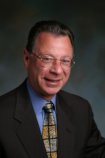In the early days of the millennium, man (and an occasional
woman) settled disputes with rocks, arrows and knives. As we
approach the end of this millennium, we haven't necessarily
abandoned the old ways of dispute resolution, but increasingly,
we resort to litigation as a preferred method of seeking redress.
As a consequence of this move to a more peaceful means (if you
set aside the emotional and economic cost), there has been a
veritable explosion of litigation. The Los Angeles County
Superior Court reports that the county's population in 1880 was
33,381, that 633 actions were filed in the superior court that
year, and only 57 attorneys practiced in Los Angeles. At the
present time, there are 42,367 attorneys in Los Angeles County
and for the fiscal year ended June 30, 1999, 66,145 civil, 10,355
probate and 36,025 domestic relations cases were filed in Los
Angeles County. Population, however, has also increased. The
State of California estimates the current population of Los
Angeles County as 9,757,500. As a percentage of the population,
the civil, probate and domestic relations cases are presently a
smaller percentage than that which existed in 1880!
In the early days of the West, a judge would travel from town to
town and wherever he elected to hold court, that site was
considered the courtroom. These days, there are courthouse
structures throughout the land for trials, appeals,
administrative hearings, bankruptcy, tax problems, immigration,
and a variety of other matters.
Not everyone has given up the ways of the old West. In recent
times, to the dismay of most, courthouses find themselves
protected from the outside world by armed deputy sheriffs and
highly sensitive metal detectors as clients and lawyers alike
pass through to conduct their business.
In Los Angeles, the second floor of the Los Angeles County
Courthouse is referred to among lawyers as "divorce alley." The
phrase is a fragment from the past. Although at one time we
referred to a marital breakup as a divorce, today we say that the
marriage has been dissolved. One wonders if that euphemistic
change in nomenclature eases the pain for those involved. More
importantly, however, when the terminology was changed from
divorce to dissolution of marriage in the early 1970's, the
courts abandoned the concept of determining fault between the
parties and awarding a greater share of community property to the
offended party. Today, in the absence of an agreement to the
contrary, the courts focus on assuring the parties of an equal
division of community property.
As a result, if Adam and Eve were to obtain a dissolution of
their marriage in 1999, each would be arguing over his or her one-
half interest in the community property apple! Alternatively, if
the apple had been consumed, each would hire valuation experts to
determine what one party owes the other for having consumed more
than their share.
Technology as well as terminology has changed over time. When I
began to practice law in 1968, if you wanted more than one copy
of a document, the reproductive method involved was something
called "carbon paper." Today many office printers reproduce
copies at 18 pages per minute or faster.
It surely must be a sign of age if you know that the term "cc"
followed by a name at the bottom of a letter indicates to the
reader that a "carbon copy" of the letter is being provided to
that individual. When sending e-mail, I note the continued use
of "cc" and wonder how many youthful users of e-mail know what
the term really means?
At one time, when an appellate court produced an opinion
regarding a case, it was to be found only in a printed case book
in a law library. Today, an entire law library can be purchased
on CD-Rom and carried around in a small briefcase.
In the early days, when an attorney required court forms, he
would have to send someone down to the county courthouse and
obtain copies of forms for a nominal charge. Today the court
forms appear on judicial and governmental Internet sites and can
be printed and available for use in mere seconds.
Most nonlawyers familiar with the exploits of Perry Mason are
familiar with the fact that courtroom staff includes a court
reporter transcribing the testimony upon a stenotype machine.
Although the stenotype machine was invented during the late
1800's and the machine currently in use was developed during or
about 1912, the use of shorthand was the principal method of
recording testimony until the early 1940's. Some court
reporters, notwithstanding the development of the new technology,
continued to use shorthand because they were comfortable with its
use and found no need to learn the new technology. One court
reporter, reportedly in his 70's, Ronald Clifton, continues today
to use shorthand in the taking of deposition testimony.
Although the Perry Mason episodes generally depicted a court
reporter making use of a stenotype machine, Anatomy of A Murder,
produced and directed by Otto Preminger in 1959, depicted a court
reporter taking notes of trial testimony by hand. Perhaps Mr.
Preminger had his deposition taken at one time before Mr. Clifton
as a court reporter.
Lest we become too critical of the proliferation of lawsuits in
this country, keep in mind the fact that the dangers of asbestos,
cigarettes and health care are being addressed in class action
lawsuits never envisioned in the early days of judicial dispute
resolution.
Perhaps the challenges which will confront future lawyers can be
found within the pages of today's science fiction!
